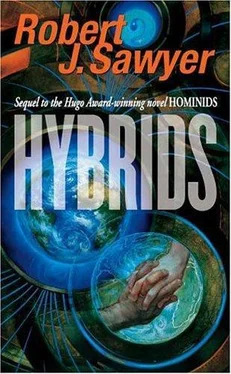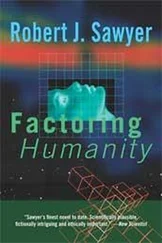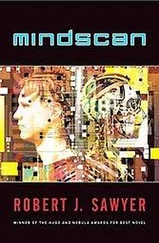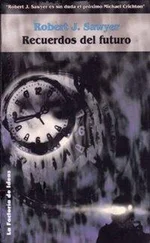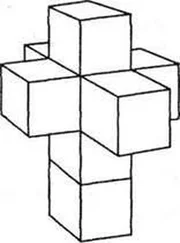Robert Sawyer - Hybrids
Здесь есть возможность читать онлайн «Robert Sawyer - Hybrids» весь текст электронной книги совершенно бесплатно (целиком полную версию без сокращений). В некоторых случаях можно слушать аудио, скачать через торрент в формате fb2 и присутствует краткое содержание. Жанр: Фантастика и фэнтези, на английском языке. Описание произведения, (предисловие) а так же отзывы посетителей доступны на портале библиотеки ЛибКат.
- Название:Hybrids
- Автор:
- Жанр:
- Год:неизвестен
- ISBN:нет данных
- Рейтинг книги:4 / 5. Голосов: 1
-
Избранное:Добавить в избранное
- Отзывы:
-
Ваша оценка:
- 80
- 1
- 2
- 3
- 4
- 5
Hybrids: краткое содержание, описание и аннотация
Предлагаем к чтению аннотацию, описание, краткое содержание или предисловие (зависит от того, что написал сам автор книги «Hybrids»). Если вы не нашли необходимую информацию о книге — напишите в комментариях, мы постараемся отыскать её.
Hybrids — читать онлайн бесплатно полную книгу (весь текст) целиком
Ниже представлен текст книги, разбитый по страницам. Система сохранения места последней прочитанной страницы, позволяет с удобством читать онлайн бесплатно книгу «Hybrids», без необходимости каждый раз заново искать на чём Вы остановились. Поставьте закладку, и сможете в любой момент перейти на страницу, на которой закончили чтение.
Интервал:
Закладка:
“Oh, come on, Louise!”
“No, really. I’ve been searching the web for information on the relationship between electromagnetic fields and consciousness, and I came across something very interesting called CEMI theory.”
“Semi-theory?” repeated Jock. Perfect name for a half-baked idea…
“CEMI, with a C,” said Louise. “It’s short for Conscious Electromagnetic Information theory. A couple of researchers independently developed it, Johnjoe McFadden at the University of Surrey and Susan Pockett in New Zealand.” She looked out Jock’s window, apparently gathering her thoughts, then: “Look, we’ve identified all sorts of specific areas in the human brain: where visual images are created, where mathematical operations occur, even-I’m sure you’ve read about this in the press-where the seat of religious feelings is. But the one thing we’ve never located is the physical site, the actual location, of consciousness in the brain. Well, McFadden and Pockett think they’ve found it-not in the brain, but surrounding it and permeating it: an electromagnetic field. Such a field would allow neurons that are separated by great distances in the brain to nonetheless connect with each other, binding together all the little bits of information into an integrated whole, a coherent picture of reality.”
“Wireless communication in the brain?” said Jock, intrigued despite himself.
“Exactly. Back in 1993, Karl Popper proposed that consciousness was the manifestation of a force field in the brain, but he thought it must be some unknown kind of force field, since he’d figured we’d have discovered it already if it consisted of energy we were familiar with. But McFadden and Pockett say the field is simply electromagnetic.”
“And they’ve detected it?”
“Oh, there certainly is electromagnetic activity in and around the brain; that’s what EEGs measure, after all. But remember, our Barast friends have unified electromagnetism and the strong nuclear force-in other words, there’s much more to electromagnetic fields, including both the Earth’s and the ones produced by our brains, than we’ve ever been aware of.”
“But have these researchers you mentioned proved that such fields are actually linked to consciousness?” asked Jock.
Louise brushed dark hair out of her eyes. “No, not yet. And I will admit that there’s a lot of resistance from some quarters to the very notion. Good old Rene Descartes believed in dualism-the notion that the body and the mind are separate things-but that’s been out of fashion for quite some time now, and, well, some see CEMI as an unwelcomed return to it. But CEMI theory makes sense from an information-processing standpoint. Essentially McFadden and Pockett are saying that awareness and information are the same phenomenon viewed from different reference frames, and-”
“Yes, so?”
“Well,” said Louise, “if consciousness is an electromagnetic phenomenon, then it’s perhaps no surprise that its first appearance was during a geomagnetic field collapse. Now, as I said, we know from the recent Barast experience that such a collapse on its own won’t cause problems with consciousness-but I’m a solar physicist, remember. I may specialize in neutrinos, but I’m interested in the whole range of solar radiation-and our brains, with these delicate electromagnetic fields, will be hit by an onslaught of normally deflected solar radiation for years or decades during the collapse. The more I look into this, the more I think a consciousness crash of some sort just might occur.”
“But that’s crazy,” said Jock. “Consciousness can’t be electromagnetic. I had an MRI last year, and I assure you, young lady, that I was fully conscious throughout the procedure.”
“That’s the most common objection to this theory,” said Louise, nodding. “McFadden addressed that directly in his most recent paper in the Journal for Consciousness Studies. He contends that fluid within the brain ventricles effectively creates a Faraday cage, insulating the brain from most external electric fields. And, as for MRIs, he points out that those are static electric fields-changing only the direction of moving charges, and so they don’t have physiological effects. Likewise, Earth’s magnetic field is static and pretty uniform-or was, at least until the collapse began. But changing-as opposed to static-external electromagnetic fields do induce electric currents in the brain. And these do affect brain activity; in fact, there are strict guidelines for repetitive transcranial magnetic stimulation that have to be followed to prevent inducing seizures in normal people.”
“But-but if consciousness is electromagnetic, why can’t we detect it?”
“Actually, we can. Susan Pockett has enumerated all sorts of research that says that the brain’s electromagnetic field does change in replicable ways when experiencing specific qualia: you can measure changes in the brain’s electromagnetic field when you’re looking at something red as opposed to blue, or hearing a middle C instead of a high C, and so on. She’s really good at shooting down objections to this theory. For instance, if the corpus callosum-the bundle of nerves that connects the left and right hemispheres-is severed, you’d expect there to be no communication at all between the two halves of the brain. And yet, except in very contrived situations, split-brain patients perform quite normally; despite there being no physical connection between their two hemispheres, their consciousness is integrated-precisely, says Pockett, because consciousness is manifested in the electromagnetic field that contains the entire brain, not through neural-chemical reactions.”
“So you’re saying-what? — that the two halves of the brain communicate telepathically? Oh, come on!”
“They are communicating, even in the absence of the hard-wired link between them,” said Louise. “That’s a fact.”
“Then why don’t I pick up your thoughts when I’m standing next to you?”
“Well, first, remember the brain is essentially enclosed in a Faraday cage, shielding it. Second, Pockett believes the major oscillations associated with consciousness are in the range of one to one hundred hertz, with most of the power around forty hertz. That means they have a wavelength of about 8,000 kilometers, and the ideal antenna for picking up an electromagnetic signal is one wavelength long. Without either a truly giant receiver or very sensitive equipment, you’d never pick up any part of my consciousness by just being close to me. But that the field is integrated over the volume of a single brain does make sense. One of the big issues in consciousness is the so-called binding problem. Look at that book, there.” She pointed at a volume sitting on Jock’s desk, an old RAND nuclear-warfare study. “One part of the brain recognizes that it’s green. Another part picks out the outline of the object from the background. A third part digs up the word ‘book’ to describe it. We know that’s how the brain works-a bunch of compartmentalized functions. But how do all those bits get bound together, producing the thought that we’re looking at a green thing called a book? CEMI says the electromagnetic field is what does the binding.”
“This is all very speculative,” said Jock.
“It’s all very cutting edge, but it is a good, solid scientific theory that makes falsifiable predictions. I tell you, Jock, I hadn’t thought a lot about exactly what constitutes consciousness until all this stuff with alternative worlds began, but it’s a fascinating area of research.”
“And you’re worried that our consciousness might get scrambled as Earth’s magnetic field collapses?”
“I don’t say anything is going to happen-after all, you are right when you say the Neanderthals went through their own magnetic-field collapse recently and nothing happened to them. But, well, yes-I am worried. And I think you should be, too.”
Читать дальшеИнтервал:
Закладка:
Похожие книги на «Hybrids»
Представляем Вашему вниманию похожие книги на «Hybrids» списком для выбора. Мы отобрали схожую по названию и смыслу литературу в надежде предоставить читателям больше вариантов отыскать новые, интересные, ещё непрочитанные произведения.
Обсуждение, отзывы о книге «Hybrids» и просто собственные мнения читателей. Оставьте ваши комментарии, напишите, что Вы думаете о произведении, его смысле или главных героях. Укажите что конкретно понравилось, а что нет, и почему Вы так считаете.
